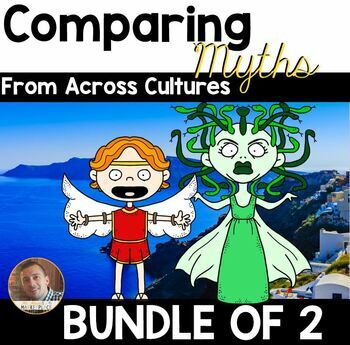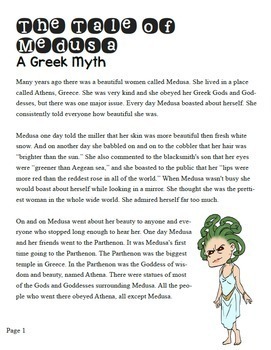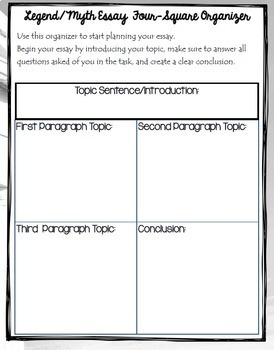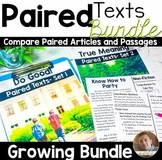Paired Texts: Comparing Myths & Legends from Across Cultures
- Zip
What educators are saying
Products in this Bundle (2)
Also included in
- Included in this pack are paired texts, including fiction and non-fiction. After reading, students then answer multiple-choice questions and short answer questions to deepen understanding of the information.The packs are easily packaged for you to print for students. There is a cover page, directionPrice $22.57Original Price $32.25Save $9.68
Description
This BUNDLE includes both of the Comparing Myths and Legends packets including Medusa VS. No-Faced Doll and Icarus vs. Native American Legend.
Here are the full descriptions:
Icarus VS. The Warrior and The Eagle:
This project asks students to compare myths and legends from two very different cultures, finding both the similarities and differences. Through this common core linked project, students will read two myths, one about the Myth Icarus, and the other a Lenni Lenape legend called, "The Warrior and the Eagle."
-----------------------------------------------------------------------------------------
Medusa VS. The No-Faced Doll
This project asks students to compare myths and legends from two very different cultures, finding both the similarities and differences. Through this common core linked project, students will read two myths, one about the Greek Myth, Medusa, and the other an Iroquois or Haudenosaunee legend called, "The No-Faced Doll."
-----------------------------------------------------------------------------------------
This pack includes:
*A brief overview of the standards addressed.
*A student page explaining the reading and writing task.
*An introduction to myths and legends, including key terminology students must know before completing this assignment (including hamartia- tragic flaws in characters).
*Two myths
*Three graphic organizers- (theme, hamartia, compare/contrast, and a four square organizer to plan the writing process).
*Writing paper for students to write their final essay.
Through these activities, students are addressing many common core standards of Reading Literature, including to make connections across cultural texts.
I hope your kids have as much fun as my kids did with this assignment!!
Thanks for looking!
-Dan M.






